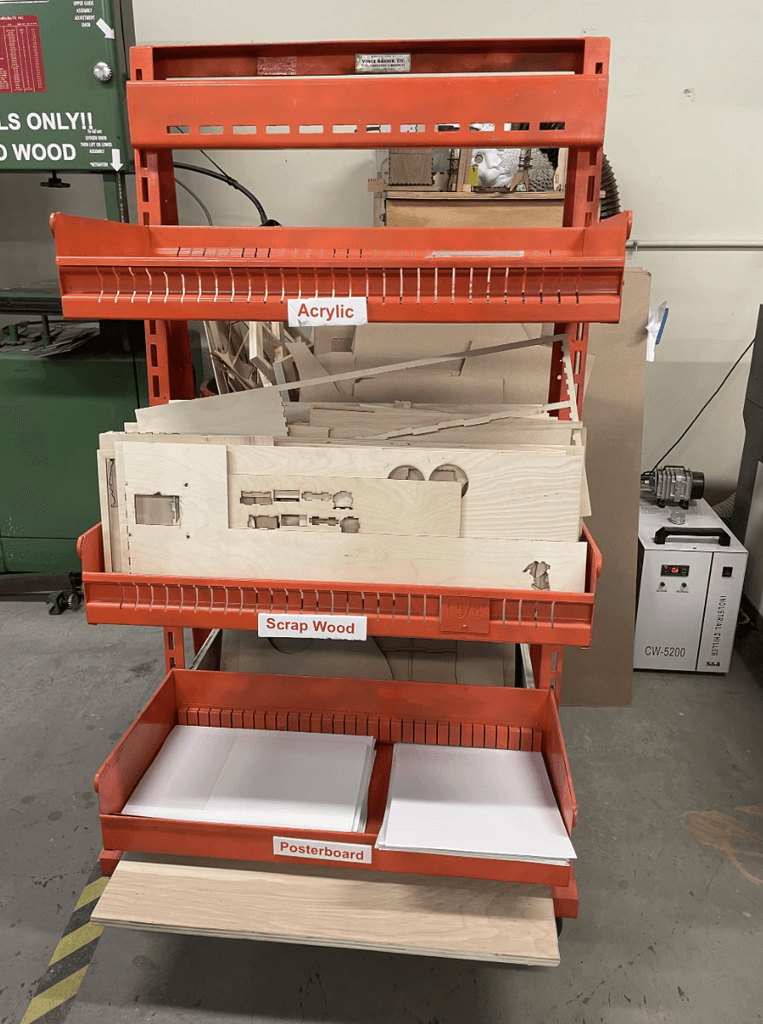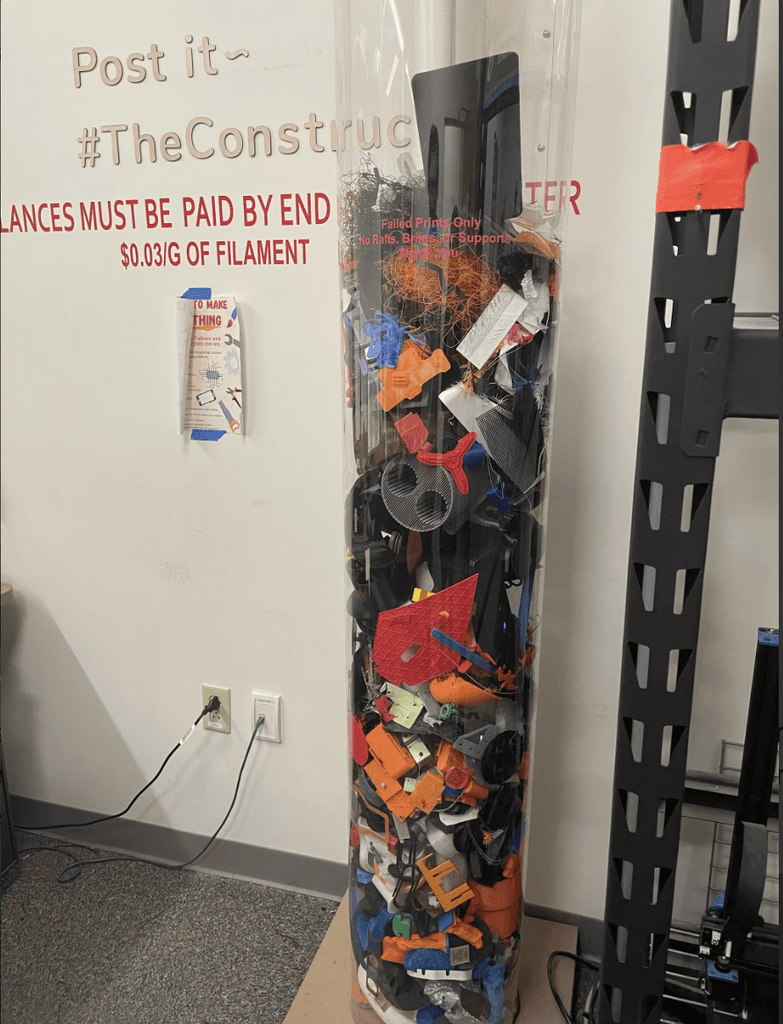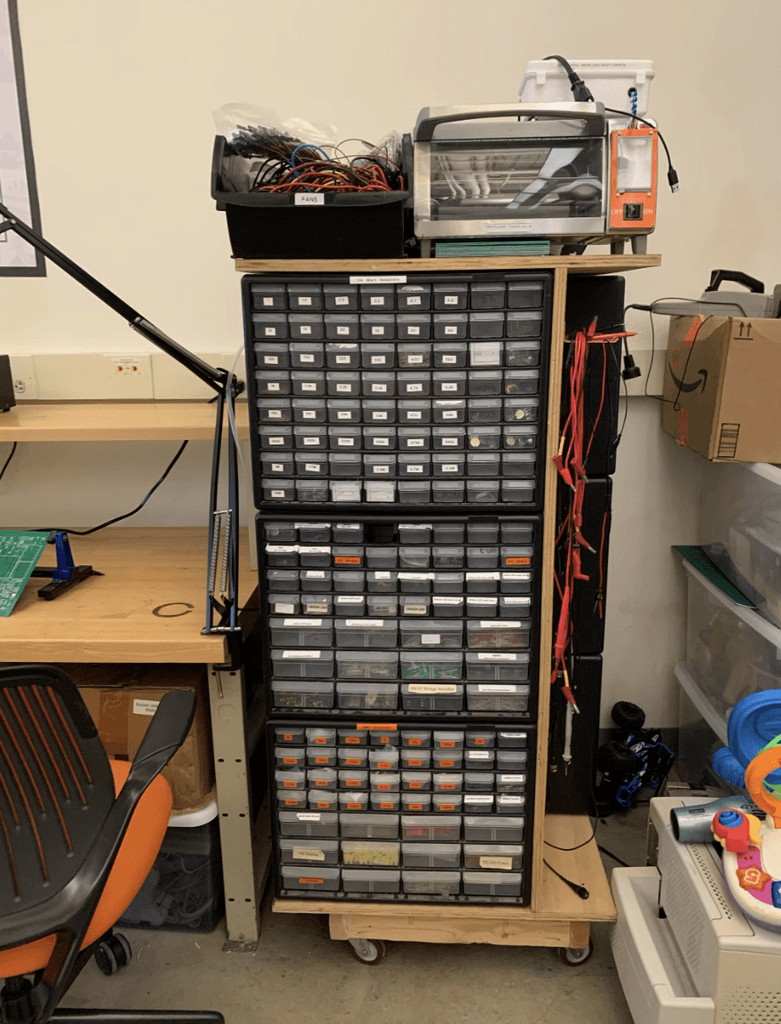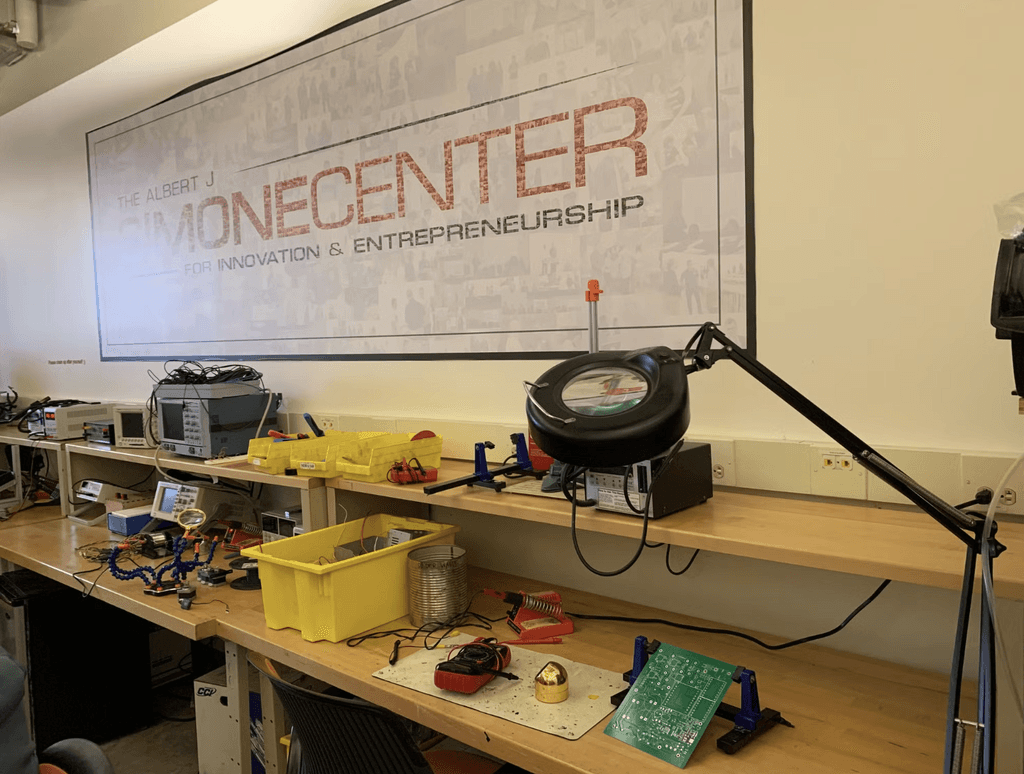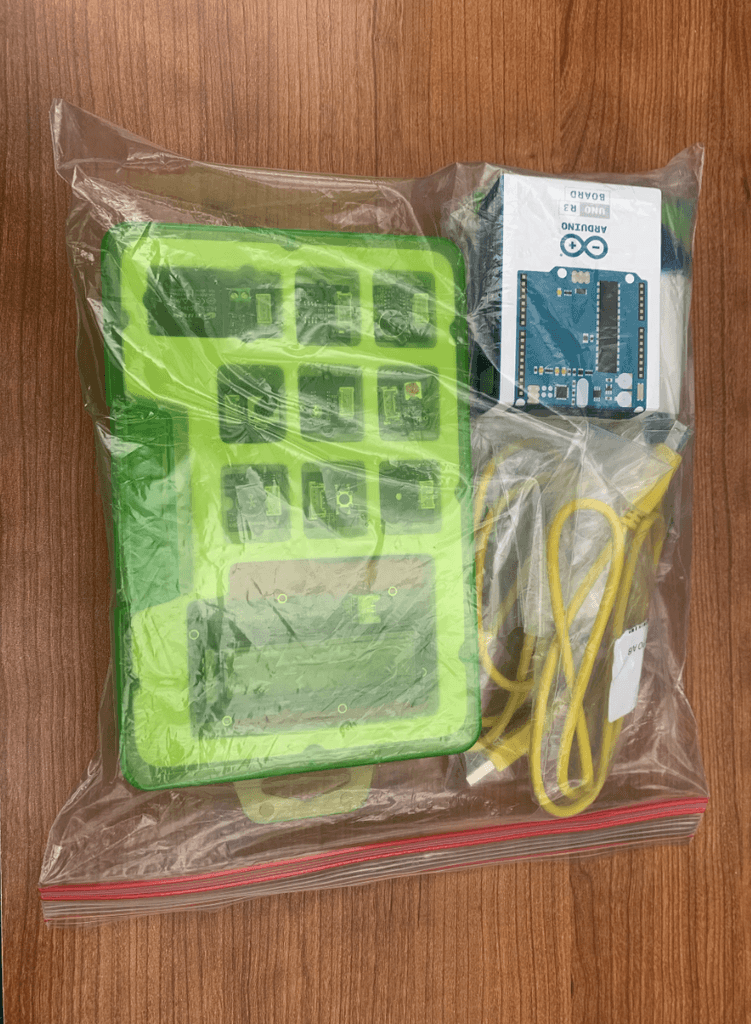Interview Summaries
We conducted a total of 10 interviews: 7 students, 2 campus labs, and 1 professor. All student interviews were conducted individually while the labs and professor interviews were conducted in pairs of 2. Although we only interviewed one professor many students gave us detailed insight into how their professors felt about used materials and if they provided students access to any required course materials. One student mentioned the campus group Engineering House, and we then decided to interview the group.
STUDENT
Student 1: Ph.D. student, Mechanical Engineering
The interview was conducted in person. The student mentioned that the professor didn’t allow them to bring a used vacuum cleaner so they bought a new one as a group. After the class finished, one of the group members kept the vacuum cleaner and took it home.
Student 2: Undergrad student, Industrial Design
The interview was conducted in person. Wood needed for this class can be bought from the class itself. Student 2 shows how they store the used materials in a box and allow students to take them to use again for free. They will collect the big items in the larger box and the smaller items in the medium box. Other materials that cannot be reused, will go into the trash.

Big box
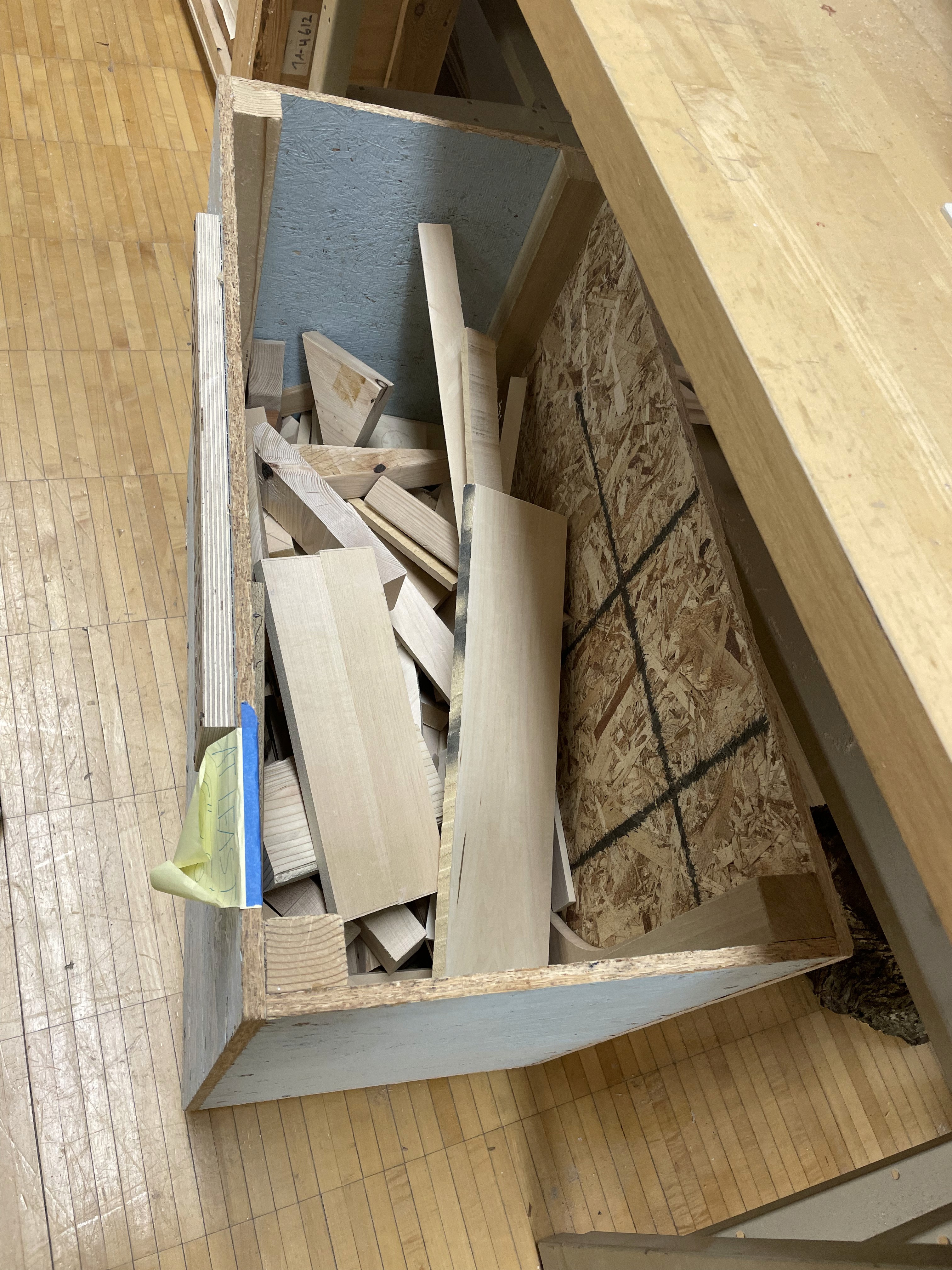
Medium box
Student 3: Masters student, Data Science
The interview was conducted over the phone. The student keeps all her old textbooks on a shelf in her room and old class notes in a box. She does not look at these materials often but she keeps them to reference when needed. All materials for new classes are bought online.
Student 4: 4th-year student, Mechanical Engineering
The interview was conducted in person. The student keeps all old textbooks and class notes on an online drive, in case she needs to reference them in the future. She needed physical materials for her circuit class, she borrowed a kit from the Engineering House. After the class, she returned the kit so another student could use it.
Student 5: Undergrad student, 3D Digital Design and Development
The interview was conducted in person. The student primarily uses online resources for their classes, indicating that they may be utilizing various online platforms and tools for research, reading, and studying. However, if the student requires additional materials such as textbooks, notes, or other course-related items, they rely on their fellow students to provide them with the necessary resources. This could indicate that the student may not have access to all of the required materials or may prefer to obtain resources from classmates to save costs.
Student 6: Undergrad, Web and Mobile Computing
The interview was conducted face-to-face with the student. During the interview, the student revealed she has many books and course materials from the previous semester. Despite having many physical copies, she prefers having a digital document of textbooks as it is easier to carry and more accessible, indicating that she might prefer a more mobile and efficient approach to learning. She has been storing her books to lend or give to someone who requires the books and materials.
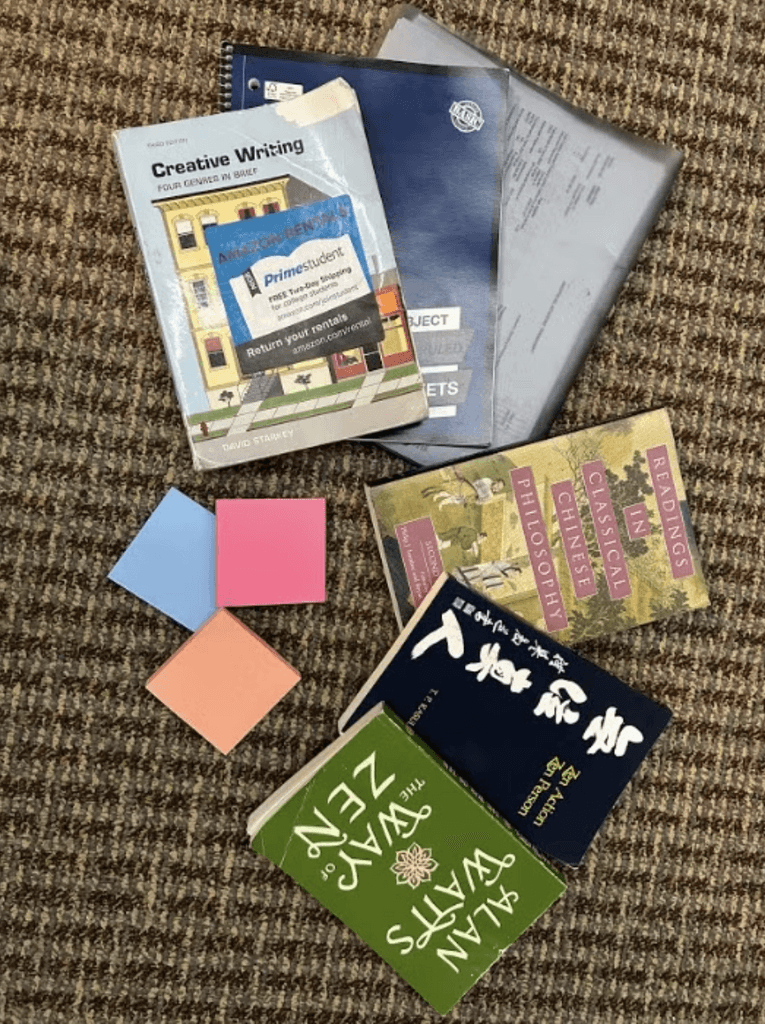
Excess Books
Student 7: Masters student, Human-Computer Interaction
The interview was conducted in person. The student bought the Arduino Kit for a class he took and keep it in his room after the class finished. He then gave the Arduino Kit to a junior he knew who is going to take the same class.
LAB
Campus Lab 1: The Construct @ RIT
The interview was conducted in person. The lab manager showed us around the entire lab. The first area has various woodworking tools but is most known for the laser cutters. Students typically laser cut wood, acrylic, or poster board. Scrap materials are left on a cart that students can access and use for future laser cuts. The facility sells wood, but students can bring in their own materials that have been purchased elsewhere.
Cart with used materials
The second part of the lab focuses on 3D printing. Students can send files to be 3D printed for a cost. All failed or unwanted 3D prints are kept on display to remind students to be mindful of the waste created by 3D printing. Sometimes students will take the failed 3D prints, break them down and turn them back into filament to be printed again. This does not happen in the Lab.
Failed 3D prints
The final part of the lab holds classes to teach students how to take apart old electronics and use the electrical parts. The used parts are then stored in drawers and can be used by students freely.
Drawer for electrical parts
Used electrical devices
Campus Lab 2: Engineering House
The interview was conducted off-site in person. We spoke to a student from the Engineering House. The organization is a dorm space comprising 40 rooms, a kitchen, a workshop, and a study area. All students that belong to this organization are engineering students. Members do not have to live in the engineering house to be a member of the organization. The study area has a checkout station where students may check out class materials such as textbooks and work kits. These materials have been accumulated through donations from past students.
The workshop holds scrap materials that students can use for academic or personal projects.
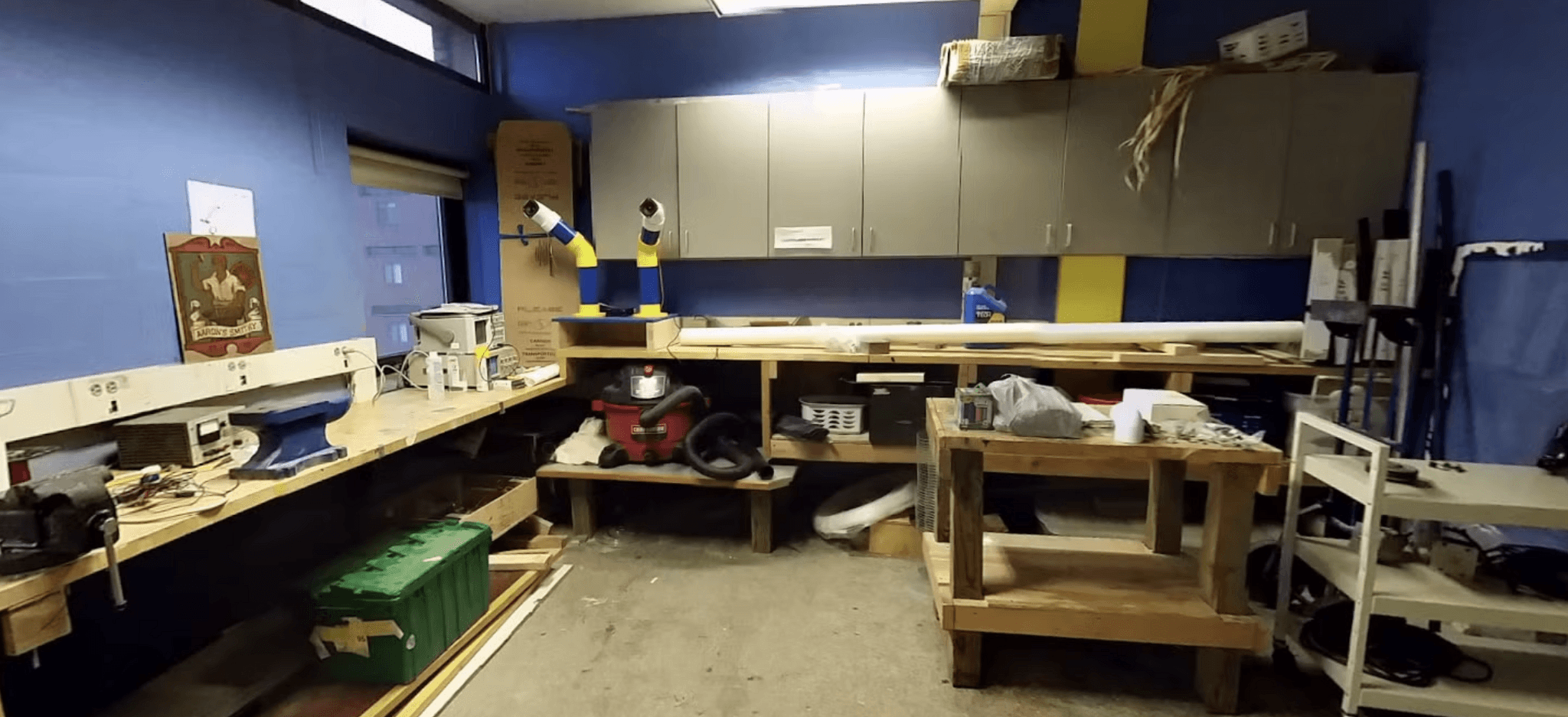
PROFESSOR
Professor 1: HCIN 722 Professor
The interview was conducted in person. The professor requires each student to have a beginner Arduino kit. The kit costs $88 and can be bought in class. The school department buys the kits in bulk and then sells them to the students, in order to reduce shipping costs. Some students can borrow Arduino kits from previous students. The professor does not mind if old kits are used as long as all the parts are working.
Arduino Kit
